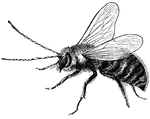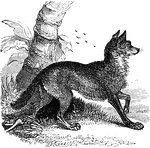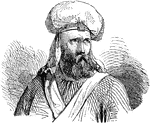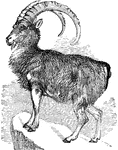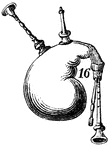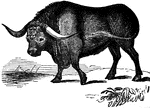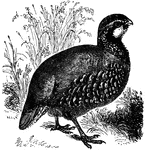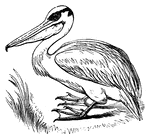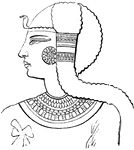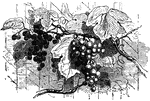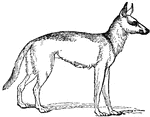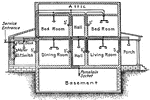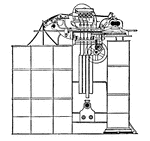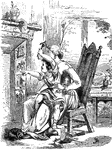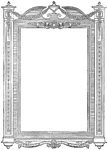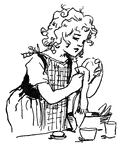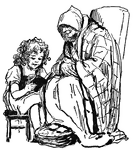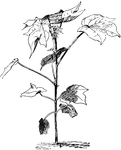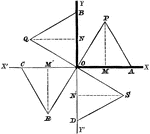
Fret Saw, in use
This illustration shows a fret saw in use. The blade is a thread of metal with teeth, set in a 'U'-shaped…

Gladiators
This illustration shows various types of gladiators, each type with with his specific weapons attributed…
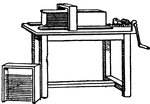
Cutting Machine (Glue Manufacturing)
This illustration shows a frame with cutting wires, and a machine capable of cutting 20,000 glue cakes…

Drying Rack (Glue Manufacturing)
This illustration shows a drying frame and drying rack used in glue manufacturing.

Ledged Door
Only suitable for inferior purposes, Ledged Doors are made of narrow vertical boards, connected by three…

Framed and Braced Door
Framed and braced doors consist of of a frame of strengthened by a middle horizontal piece, or 'rail',…

Six-Panelled Door
A six-panelled door is used mostly in the construction of housing the uppermost pair of panels are termed…

Drawing Process in the Manufacturing of Jute
After the carding process in the manufacturing of jute is completed, the jute is taken into the drawing…

Arrangement of Loops in Ordinary Web made on Hand-frame
This illustration shows the arrangement of loops in an ordinary web made on a hand-frame.
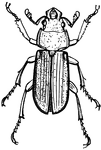
Platycerus
A genus of stag-beetle of rather small size, chiefly characterized by the distinctness of the sixth…
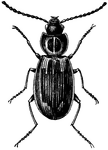
Platynus Maculicolis
Platynus maculicolis, enlarged picture. Platynus is a genus of carboid, meaning active and predacious,…

Oxen Team Plowing
A team of two oxen pull a plough across a field. Trees and a fence frame the field.

Corn Plant
Corn plants with the surface of the soil "laying by" in accordance to the Williamson Plan.

Plows for Sweet Potato Harvesting
Plows used to dig sweet potatoes. "The long vines must be first disposed of. They are usually pulled…
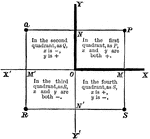
Coordinate Plane
A coordinate planes with the quadrants labeled showing which value (x or y) is positive or negative.

Mathathias Laments the Defilement of Jerusalem
"And Mathathias said: Woe is me, wherefore was I born to see the ruin of my people, and the ruin of…

The Remains of the Prow of the Viking Ship Gokstad
The ship is pictured as it looked shortly after being unearthed. The tent-like structure at the back…

Jacob Sees God and Angels on a Ladder While He Dreams at Bethel
"And he dreamed. And behold, a ladder set up on the earth, and the top of it reached to heaven. And…
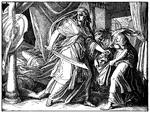
Judith Places the Head of Holofernes in a Bag
Judith, having just beheaded Holofernes, places his head in a bag with the help of her servant. She…

Jesus Raises the Son of the Widow of Nain
"Now when he drew near to the gate of the city, behold, there was carried out one that was dead, the…
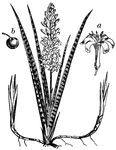
Snake Plant
Sansevieria Zeylanica is the Latin name, but this plant is also called a Mother-in-law's Tongue. "A…

Wheeler and Wilson Sewing Machine
"a, is the frame; b, shaft-crank which rocks the hook-shaft; e, receiving its motion from the double…
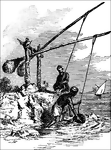
Shadoofs, Two Men Raising Water
"A contrivance extensively employed in Egypt and the East, generally for raising water. It consists…

Purchase Shears for Cutting Metal
A tool used for cutting metals. "a and c, levers connected by a link bar b, and respectively pivoted…
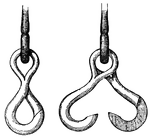
Sister Hooks - Closed and Open
"Nautical, one of a pair of hooks working on the same axis and fitting closely together: much used about…

Iron Skullcaps from the 16th Century
Two skullcaps used for defense of the head in the 16th century. The caps fit closely to the head. The…

Canadian Snow Shoe
"A contrivance attached to the foot to enable the wearer to walk on deep snow without sinking to the…

A Collection of Spectacles
"A, spectacles with bows hinged to the shoulders on the rims connected by the nose or bridge. B, spectacles…
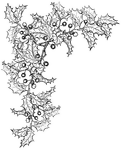
Holly Corner Motif, Upper Left
An upper left corner decoration of holly leaves and berries. Appropriate for use for Christmas, winter…
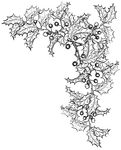
Holly Corner Motif, Upper Right
An upper right corner decoration of holly leaves and berries. Appropriate for use for Christmas, winter…
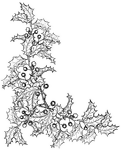
Holly Corner Motif, Lower Left
An lower left corner decoration of holly leaves and berries. Appropriate for use for Christmas, winter…
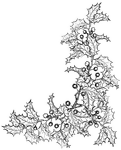
Holly Corner Motif, Lower Right
An lower right corner decoration of holly leaves and berries. Appropriate for use for Christmas, winter…
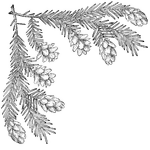
Pine Cone Corner, Upper Left
An upper left corner motif of pine branches and cones. Suitable for decorating letters and cards. Could…
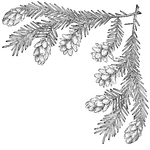
Pine Cone Corner, Upper Right
An upper right corner motif of pine branches and cones. Suitable for decorating letters and cards. Could…
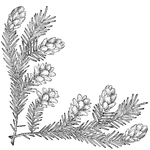
Pine Cone Corner, Lower Left
A lower left corner motif of pine branches and cones. Suitable for decorating letters and cards. Could…
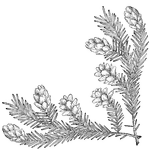
Pine Cone Corner, Lower Right
A lower right corner motif of pine branches and cones. Suitable for decorating letters and cards. Could…
